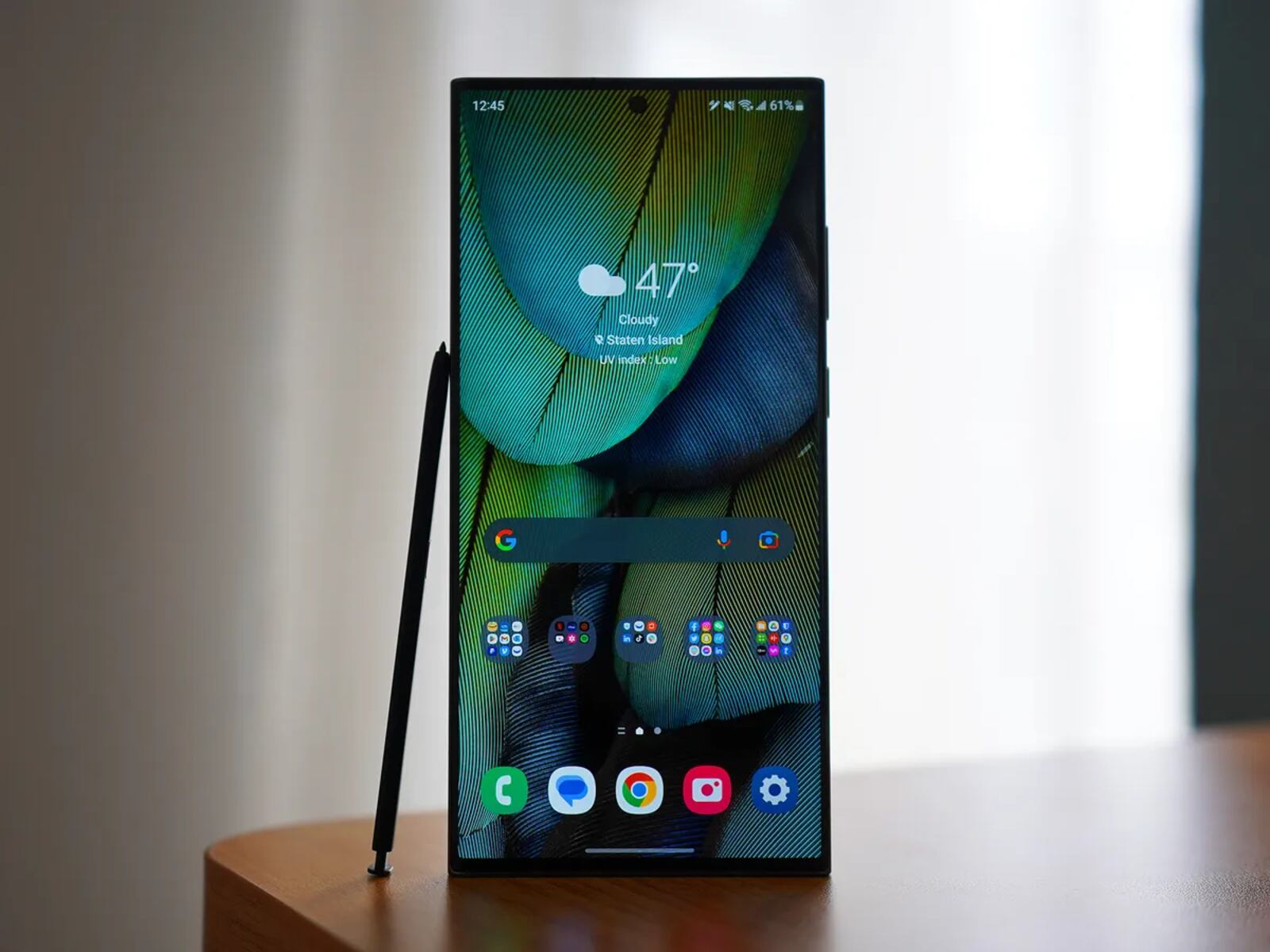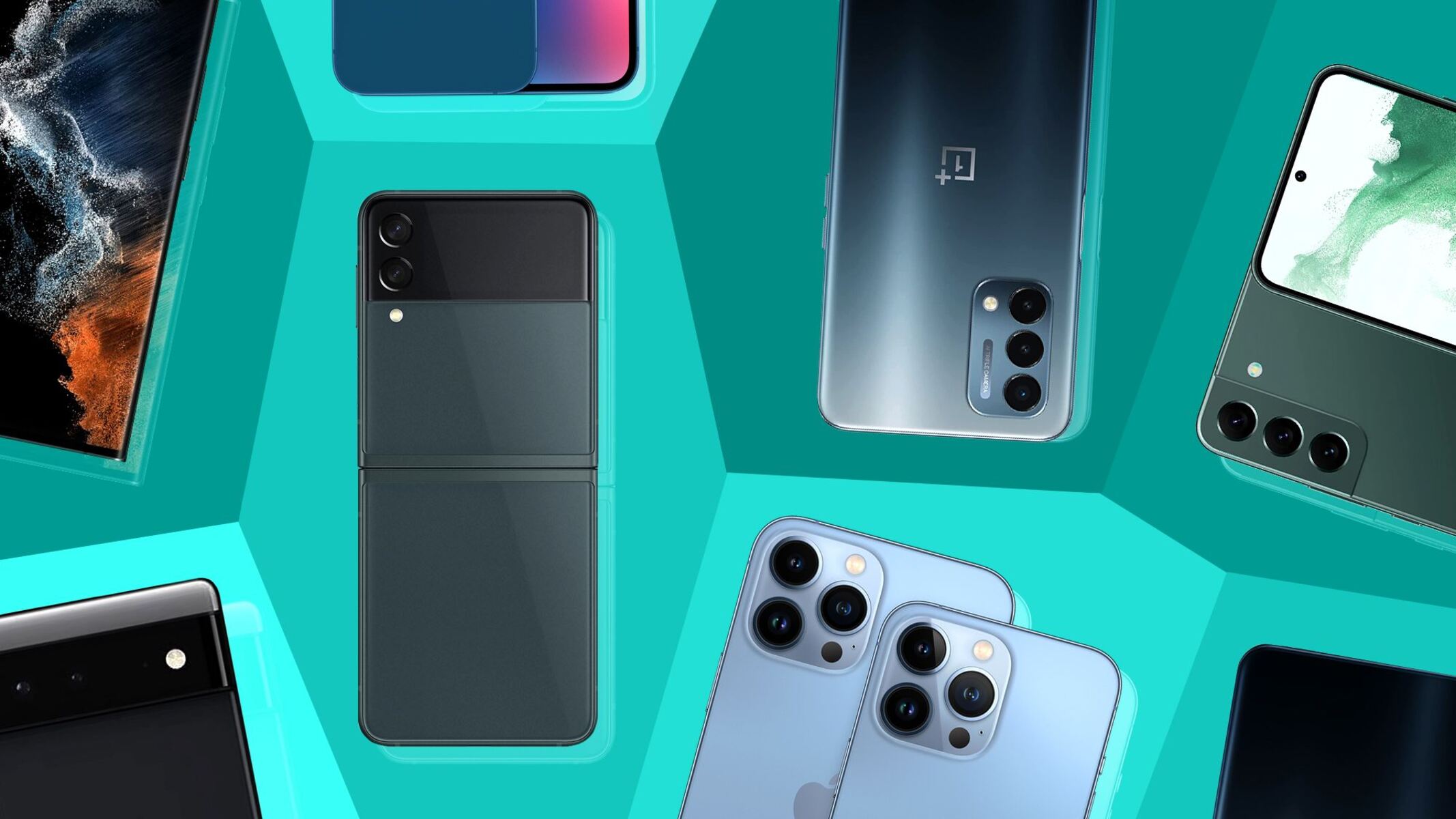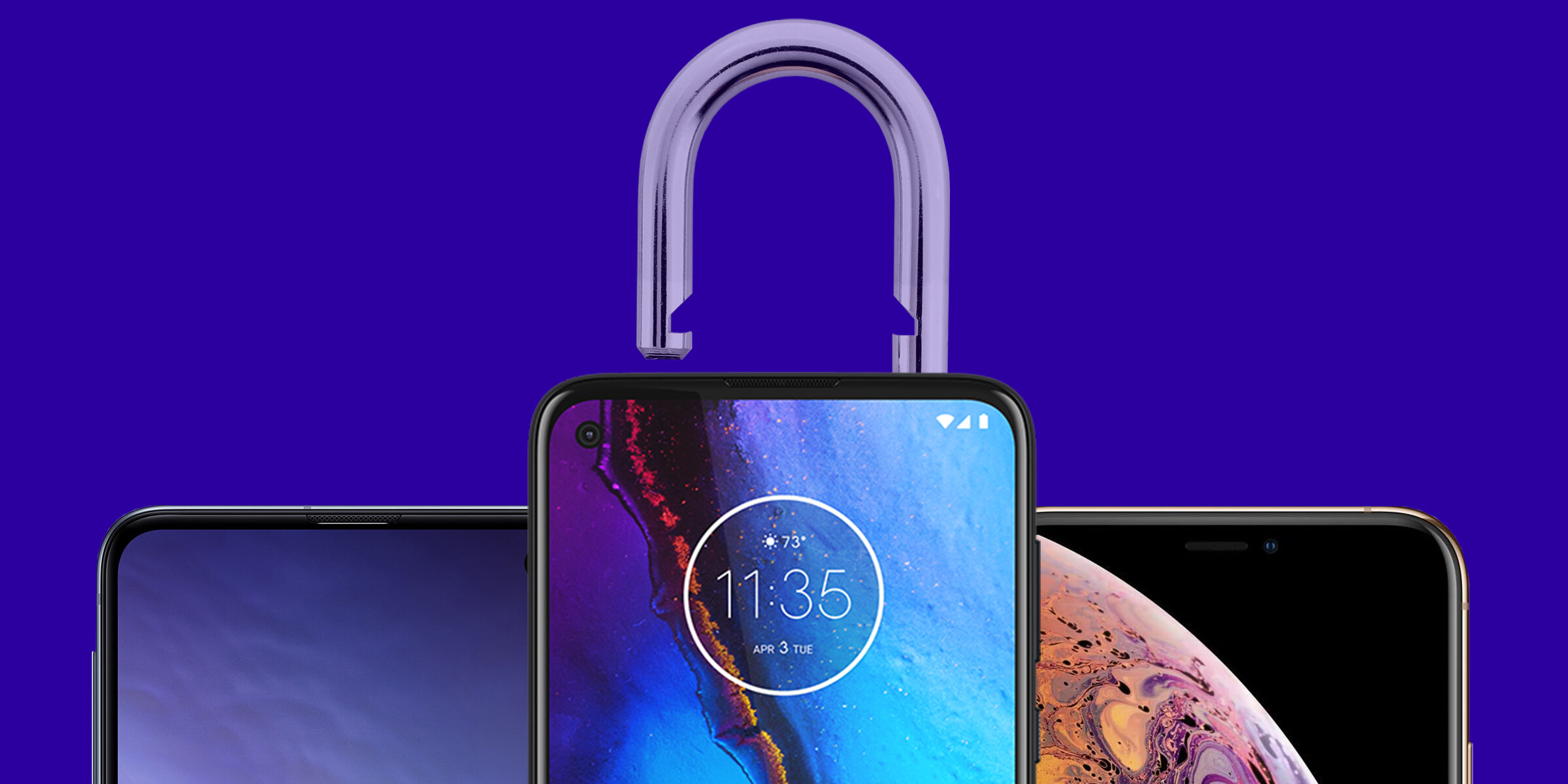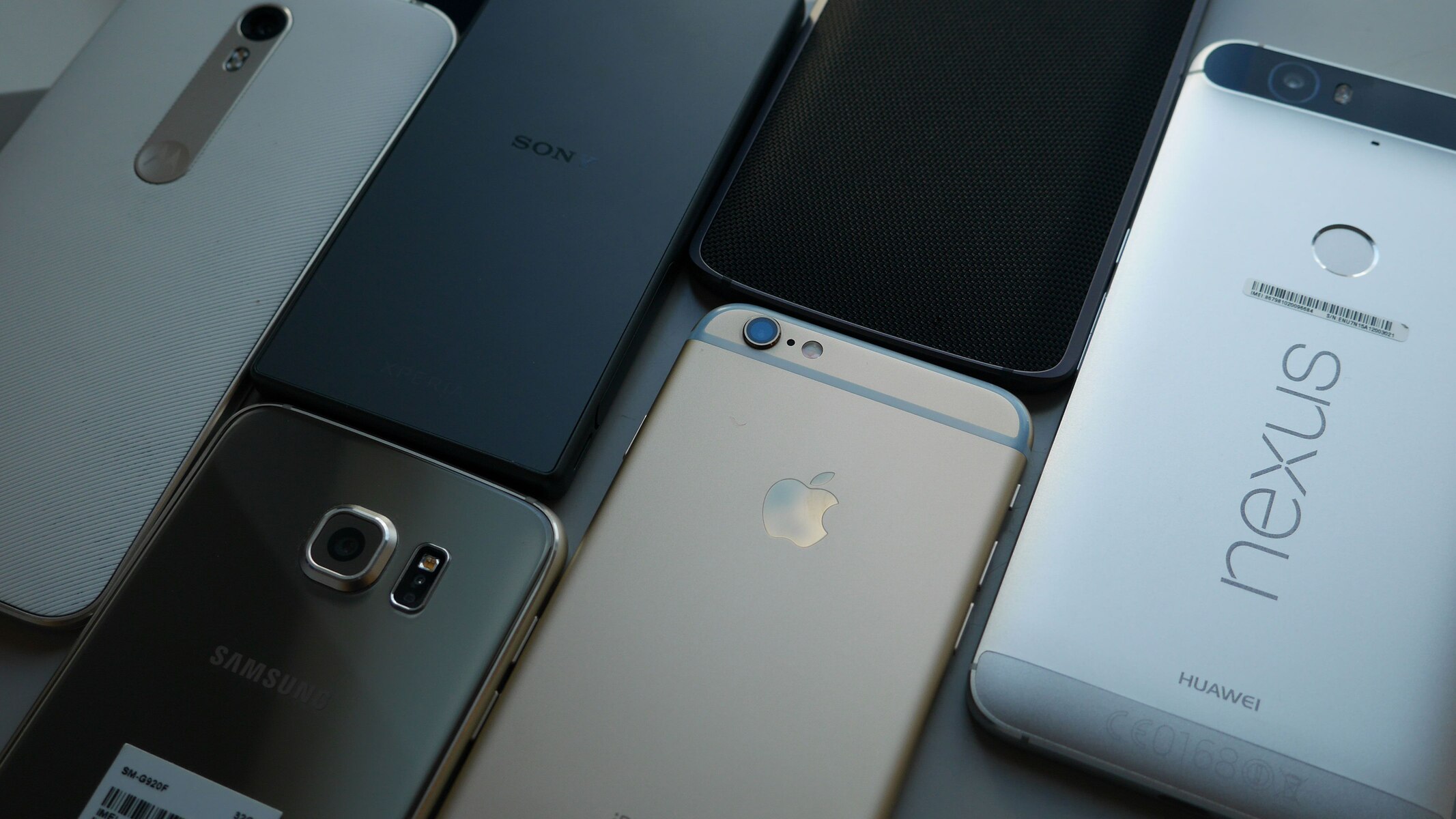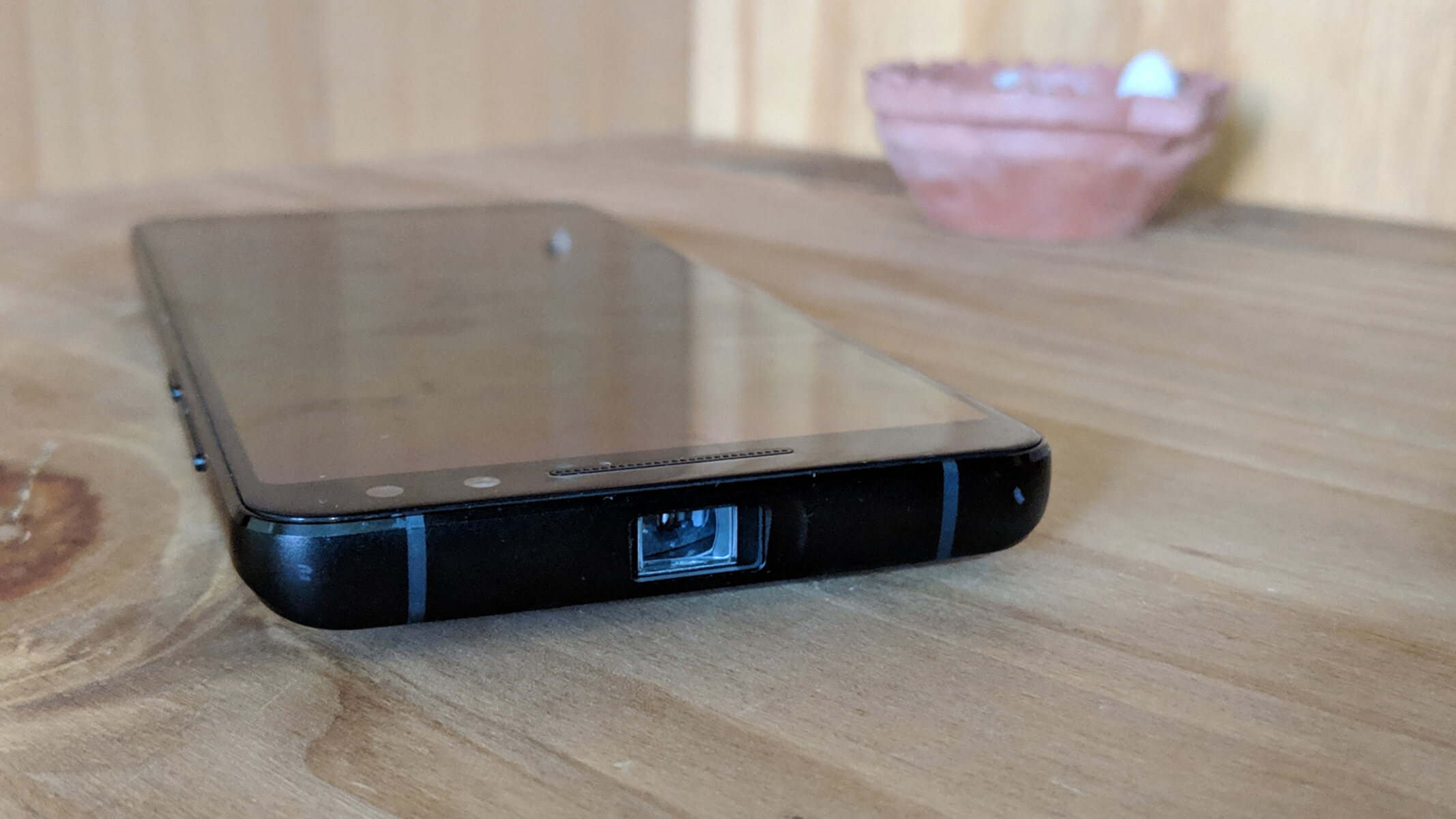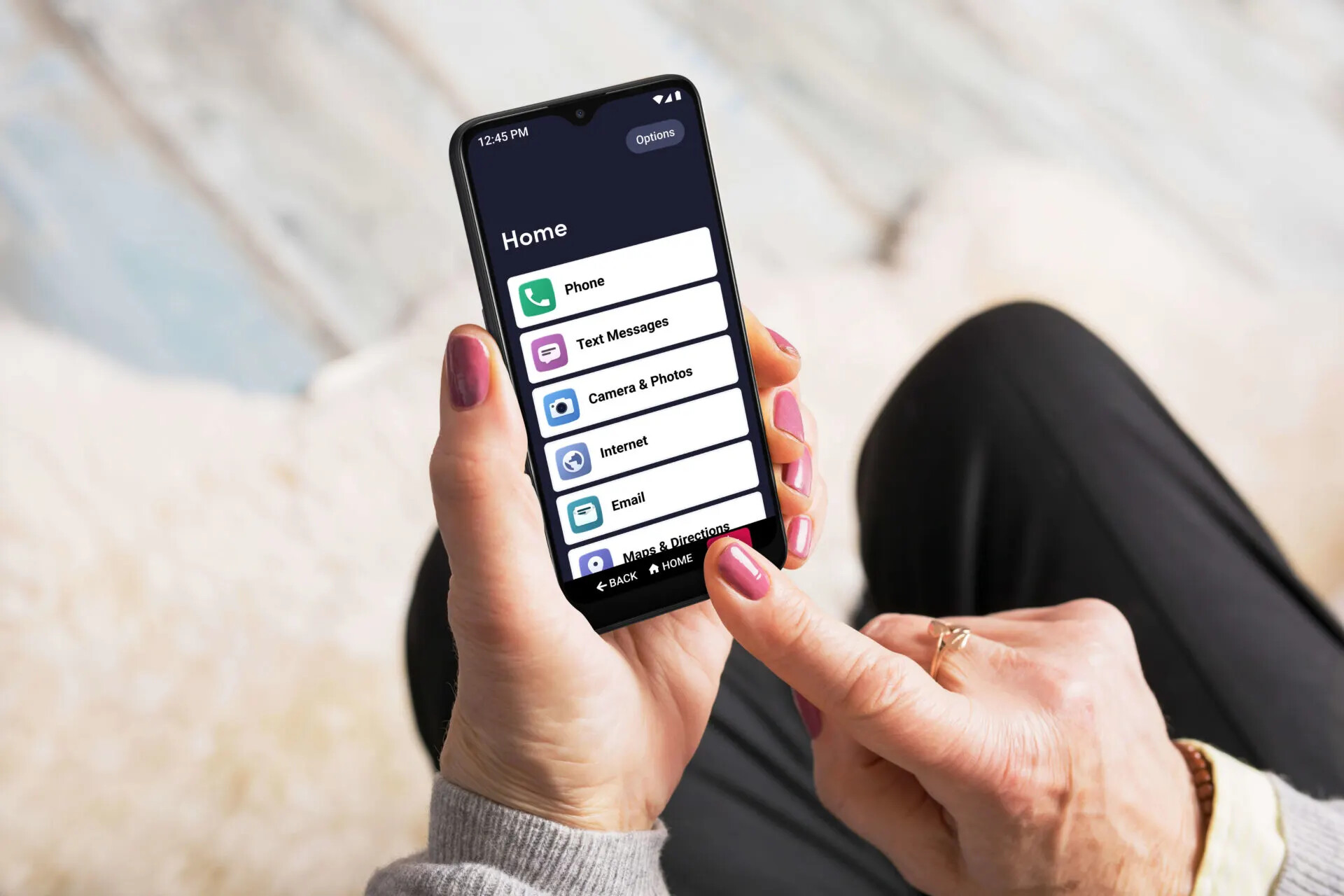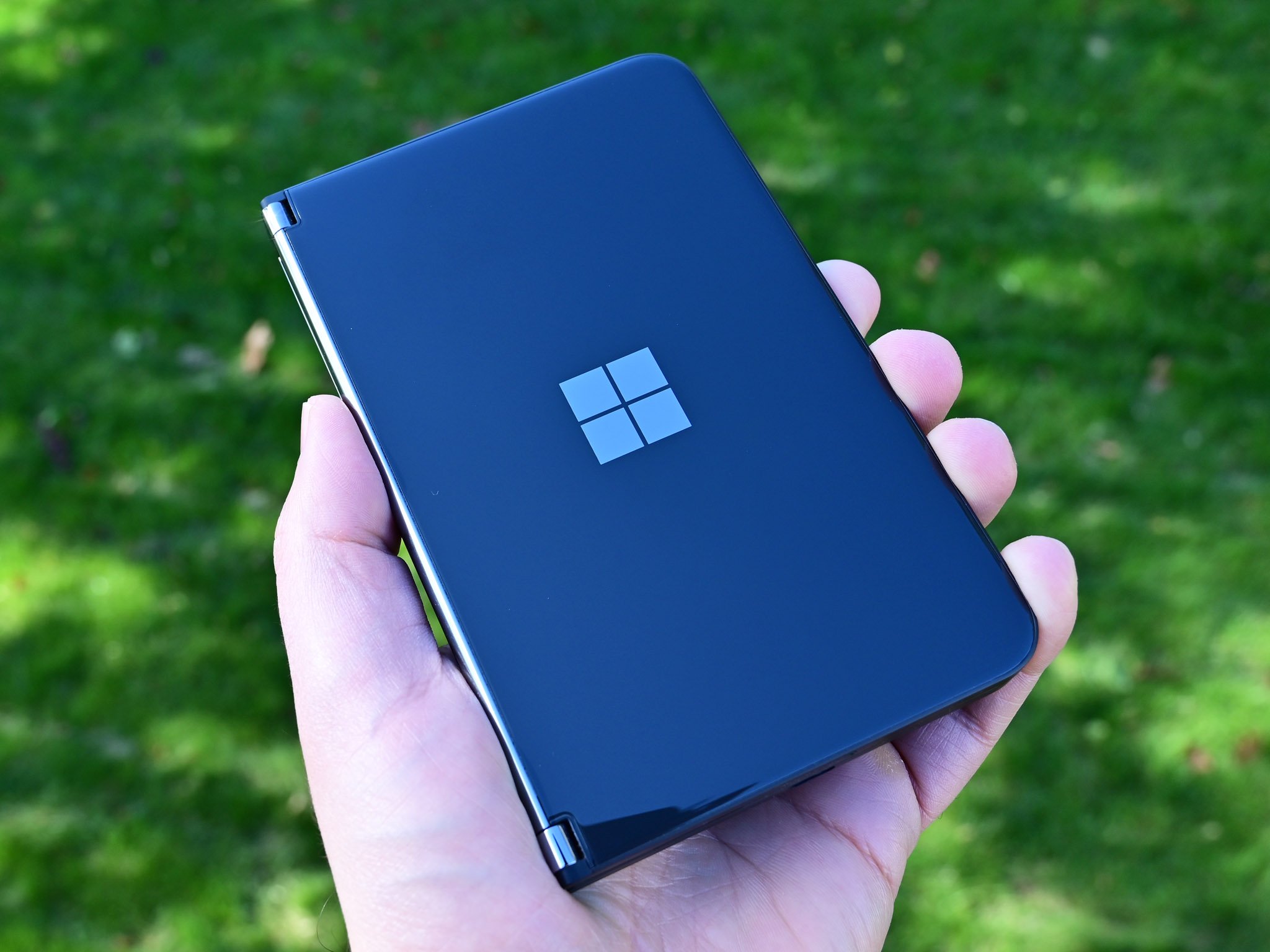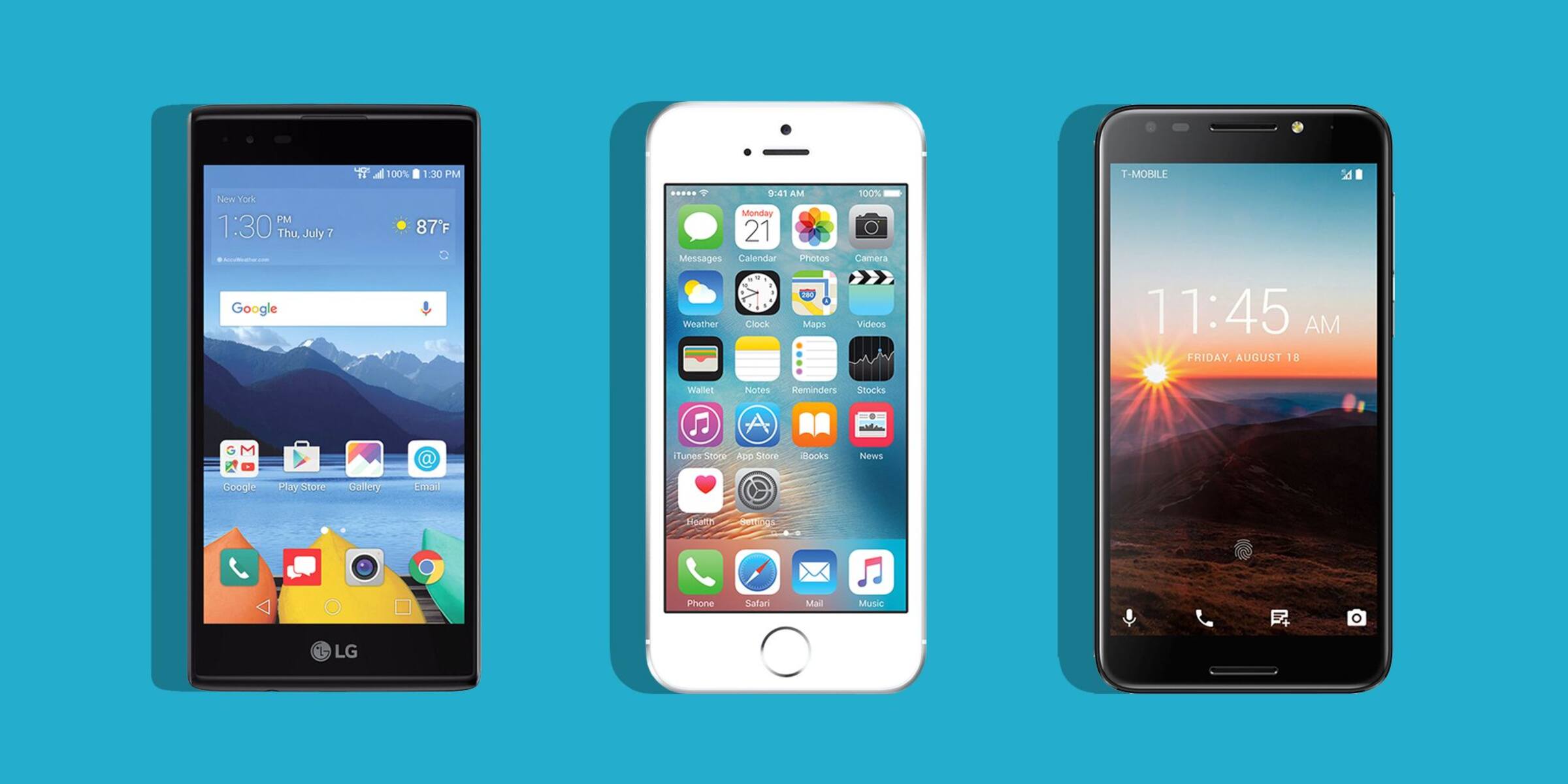Introduction
Welcome to the world of smartphones! In today’s fast-paced digital era, smartphones have become an essential part of our daily lives. They keep us connected, entertained, and organized, all in the palm of our hands. However, with countless options available in the market, choosing the best smartphone can be a daunting task. In this article, we will guide you through the various factors to consider when selecting a smartphone that suits your needs and preferences.
Smartphones come in various shapes, sizes, operating systems, and price ranges. From sleek and compact models to larger, more feature-rich devices, there is a smartphone out there for everyone. Each individual has unique requirements and priorities, whether it’s a stunning camera, long battery life, ample storage capacity, or a vibrant display. By understanding these factors and considering your budget, you can make an informed decision and find the best smartphone for you.
In the following sections, we will explore the key features to consider before making your purchase. We will discuss design and size, operating system, camera capabilities, battery life, storage capacity, display quality, performance and speed, connectivity options, and budget constraints. By evaluating these aspects, you can narrow down the options and choose a smartphone that perfectly aligns with your lifestyle and preferences.
Remember, the best smartphone is a subjective choice, dependent on your individual needs and preferences. What works for one person may not work for another. Therefore, it’s crucial to evaluate each aspect and consider how it aligns with your requirements. Our aim is to provide you with the necessary information so you can make an informed decision and find the best smartphone that enhances your daily life.
Without further ado, let’s delve into the world of smartphones and explore the features that make them an indispensable part of our lives.
Design and Size
The design and size of a smartphone play a significant role in the overall user experience. Smartphones come in a range of designs, from sleek and minimalistic to more rugged and durable options. The size of the device is also an important consideration, as it affects portability and ease of use.
When considering the design of a smartphone, it’s essential to look for a device that not only looks visually appealing but also feels comfortable in your hand. Many smartphones feature a glass or metal body, which exudes a premium and sophisticated aesthetic. On the other hand, some devices come with a plastic or polycarbonate build, which offers durability and a more lightweight feel.
In terms of size, larger smartphones with bigger displays provide a more immersive multimedia experience, making them ideal for gaming, watching videos, and browsing the internet. However, they may be less comfortable to handle and fit in your pocket. Smaller smartphones, on the other hand, offer better portability and ease of use with one hand, as they can be easily maneuvered. It’s important to strike a balance between screen size and overall device size so that it meets your needs and preferences.
Moreover, the placement and accessibility of buttons, fingerprint sensors, and ports is another important aspect of design to consider. Look for a smartphone with well-positioned buttons and easily accessible ports for charging and connecting peripherals.
Lastly, it’s worth noting that many smartphones now offer water and dust resistance, making them more durable and suitable for outdoor activities. This feature can be especially beneficial for individuals who lead an active lifestyle or frequently find themselves in situations where their device may get exposed to water or dust.
Overall, when considering the design and size of a smartphone, it’s important to find a balance between aesthetics, comfort, and usability. Choose a device that not only looks appealing but also fits comfortably in your hand and meets your lifestyle requirements.
Operating System
The operating system (OS) is one of the most crucial aspects to consider when selecting a smartphone. It determines the user interface, app compatibility, and overall functionality of the device. Currently, the two most popular operating systems for smartphones are Android and iOS.
Android: Developed by Google, Android is an open-source operating system that offers a wide range of choices in terms of device manufacturers and customization options. Android provides a high level of flexibility, allowing users to customize their device’s appearance, add widgets to the home screen, and choose from a plethora of apps available on the Google Play Store. Android also supports a wide variety of hardware, making it available on devices across various price ranges.
iOS: Developed by Apple, iOS is a closed-source operating system exclusively designed for Apple devices, including iPhones and iPads. iOS offers a tightly integrated ecosystem, with seamless synchronization between Apple devices and access to exclusive features such as FaceTime, iMessage, and iCloud. The App Store provides a vast selection of high-quality apps, optimized specifically for Apple devices. iOS is known for its user-friendly interface, consistent updates, and strong security features.
When deciding between Android and iOS, it’s crucial to consider factors such as personal preference, app availability, and integration with other devices. Android offers a wider range of hardware options and customization possibilities, while iOS provides a more cohesive user experience and ecosystem integration.
Additionally, keep in mind that different versions of the operating systems may have varying features and performance. Research the latest versions of Android and iOS to ensure compatibility with the apps and services you require.
Ultimately, the choice between Android and iOS comes down to personal preference and requirements. Both operating systems have their strengths and weaknesses, so it’s essential to consider your needs, budget, and desired user experience when making a decision.
Camera
The camera capabilities of a smartphone have become a significant factor for many users. Whether you’re a photography enthusiast or someone who enjoys capturing everyday moments, having a capable camera on your smartphone is essential. When evaluating the camera, consider the following aspects:
Megapixel Count: The megapixel count refers to the resolution of the camera sensor. Higher megapixel counts generally result in sharper and more detailed images. However, it’s important to note that megapixels alone do not determine the overall quality of the camera. Other factors such as sensor size, lens quality, and image processing algorithms also play a significant role.
Aperture Size: The aperture size determines how much light the camera sensor can capture. A wider aperture allows for better low-light performance and creates a shallower depth of field for attractive background blur (also known as bokeh) in portrait shots. Look for a smartphone camera with a wide aperture for better low-light photography capabilities.
Image Stabilization: Optical or electronic image stabilization is crucial for capturing sharp and stable photos and videos, especially in situations where there is camera shake, such as in low-light conditions or while recording handheld videos. Image stabilization minimizes blurriness and enhances the overall image quality.
Additional Camera Features: Many smartphones now offer additional camera features such as telephoto lenses for optical zoom, wide-angle lenses for capturing expansive landscapes, macro lenses for close-up shots, and depth sensing for better portrait mode. Consider your photography preferences and requirements to choose a smartphone with the camera features that align with your needs.
Furthermore, it’s essential to look beyond the technical specifications and consider the overall image quality produced by the camera. Look for sample photos and reviews to get an idea of the image quality, color accuracy, and dynamic range that the smartphone camera can deliver.
Lastly, don’t forget about the front-facing or selfie camera if you enjoy capturing self-portraits or engaging in video calls. Consider the resolution, aperture, and additional features offered by the front camera to ensure that it meets your requirements.
Remember, a higher megapixel count or advanced camera features do not guarantee excellent image quality. It’s always recommended to read reviews, compare sample photos, and consider real-world usage scenarios to make an informed decision about the camera capabilities of a smartphone.
Battery Life
Battery life is a crucial consideration when choosing a smartphone, as it directly affects how long you can use your device without needing to recharge. There’s nothing worse than running out of battery in the middle of the day, especially when you rely heavily on your smartphone for work, communication, and entertainment.
When evaluating the battery life of a smartphone, you should consider the following factors:
Battery Capacity: The battery capacity is measured in milliampere-hours (mAh) and indicates the amount of charge the battery can hold. Generally, a higher mAh rating means the battery has a larger capacity and can potentially provide longer usage time. However, it’s important to note that battery life also depends on other factors such as the device’s power efficiency and the energy requirements of the screen and processor.
Screen On-Time: The screen is one of the primary factors that drain the battery of a smartphone. A larger and brighter screen generally consumes more power. OLED and AMOLED displays tend to be more power-efficient compared to LCD screens, as they can turn off individual pixels to display true blacks, resulting in energy savings.
Processor Efficiency: The processor is responsible for executing tasks and running apps on your smartphone. Modern processors are designed to be more power-efficient, helping to optimize battery life. Look for smartphones with processors that offer a good balance between performance and power efficiency.
Software Optimization: The software optimization of the operating system and apps can have a significant impact on battery life. Some smartphones come with built-in power-saving modes that reduce background activities, limit performance, and conserve battery when needed. Additionally, certain operating systems, such as Android 12 and iOS 15, introduce battery-saving features to extend usage time.
Usage Patterns: Individual usage patterns and habits also influence battery life. Factors such as screen brightness, usage of power-hungry apps or games, and connectivity options (like Bluetooth and Wi-Fi) can affect battery drain. Consider your typical usage patterns and evaluate how a smartphone’s battery performance aligns with your needs.
It’s important to note that manufacturers often provide estimated battery life, but real-world usage can vary significantly. Reading user reviews, checking battery performance tests, and considering feedback from other users can provide a better understanding of the actual battery life you can expect from a particular smartphone.
If you find that a smartphone’s battery life is insufficient for your needs, it’s worth considering other options such as portable battery packs or power banks to extend usage time while on the go.
Ultimately, choosing a smartphone with good battery life ensures you can use your device throughout the day without constantly worrying about running out of power. Evaluate the battery capacity, screen-on time, processor efficiency, software optimization, and your specific usage patterns to find a smartphone that meets your battery life requirements.
Storage Capacity
The storage capacity of a smartphone determines how much data, apps, photos, videos, and other files you can store on your device. Having sufficient storage is essential to ensure you can freely download apps, capture high-quality photos and videos, and store your favorite music, movies, and documents without constantly worrying about running out of space.
When considering storage capacity, there are a few aspects to take into account:
Internal Storage: Internal storage refers to the built-in memory of the smartphone. It is where the operating system, apps, and user data are stored. The higher the internal storage capacity, the more files and apps you can store on your device. Many smartphones offer options for different storage capacities, such as 64GB, 128GB, or even 256GB. Choose a storage capacity that suits your usage needs and consider how long you plan to keep the smartphone before upgrading.
Expandable Storage: Some smartphones offer expandable storage options, allowing you to insert a microSD card to expand the device’s storage capacity. This is particularly useful if you anticipate needing additional storage space in the future. Check if the smartphone you’re considering has a microSD card slot and supports the capacity of storage card you plan to use.
Cloud Storage: In addition to internal and expandable storage, many smartphones now offer cloud storage options. Cloud storage allows you to store files, photos, and videos on remote servers, freeing up space on your device. Services like Google Drive, iCloud, and Dropbox offer varying amounts of free storage, with options to upgrade to higher storage capacities for a monthly fee. Consider using cloud storage to supplement your device’s storage capacity and ensure you have access to your files from anywhere.
It’s essential to consider your usage patterns and the type of content you intend to store on your smartphone when evaluating storage capacity. If you take a lot of high-resolution photos or shoot videos in 4K, you will require more storage space compared to someone who primarily uses their smartphone for basic apps and casual browsing.
Remember that the operating system and pre-installed apps also occupy a portion of the internal storage, so the actual available space may be slightly lower than the advertised capacity. Additionally, keep in mind that some smartphones offer different storage configurations at different price points, so consider your budget and storage needs when making a decision.
Overall, having adequate storage capacity ensures that you can conveniently store your files and applications without constantly worrying about running out of space. Consider the internal storage, expandable storage options, and cloud storage to find a smartphone that meets your storage requirements.
Display Quality
The display quality of a smartphone is a significant factor to consider, as it directly affects your visual experience when using the device. A vibrant and sharp display enhances the viewing of photos, videos, games, and overall user interface. When evaluating the display quality, there are a few key aspects to consider:
Resolution: The resolution determines the level of detail and sharpness on the display. Higher resolutions, such as Full HD (1920 x 1080 pixels) or Quad HD (2560 x 1440 pixels), offer crisper and more detailed visuals. However, for typical smartphone sizes, even a standard HD resolution (1280 x 720 pixels) can provide a satisfactory viewing experience.
Pixel Density: Pixel density refers to the number of pixels per inch (PPI) on the display. A higher pixel density results in sharper and more detailed visuals. However, the difference in pixel density can be less noticeable on smaller displays. Aim for a pixel density that provides a clean and clear image without any visible pixelation.
Display Technology: There are several display technologies used in smartphones, including LCD (Liquid Crystal Display), OLED (Organic Light Emitting Diode), and AMOLED (Active Matrix Organic Light Emitting Diode). OLED and AMOLED displays offer deeper blacks, better contrast, and vibrant colors compared to LCD displays. However, LCD displays can still provide good color accuracy and brightness at a more affordable price point.
Screen Size: The screen size affects the overall viewing experience. Larger screens provide a more immersive experience for multimedia consumption, such as watching videos or playing games. However, larger screens may be less comfortable for one-handed use or fitting in pockets. Consider your preferences and usage patterns to determine the optimal screen size for your needs.
Color Accuracy: Color accuracy refers to how faithfully the display represents colors. Displays with good color accuracy provide more realistic and true-to-life colors. This is particularly important if you engage in tasks that require accurate color representation, such as photo editing or graphic design.
Brightness and Visibility: The brightness of the display affects visibility in different lighting conditions, such as outdoors or in bright environments. Look for a smartphone with a display that offers high brightness levels and good visibility even in challenging lighting conditions.
When evaluating display quality, it’s important to consider your specific needs and preferences. For casual users, a display with a good balance of resolution, pixel density, and color accuracy will provide an enjoyable visual experience. However, if you engage in tasks that require precise color representation or if you prioritize immersive multimedia viewing, you may want to opt for a smartphone with higher resolution and better display technology.
Ultimately, the display is the primary interface between you and your smartphone. Choosing a device with a high-quality display ensures that you can enjoy vibrant visuals, crisp text, and an overall immersive user experience.
Performance and Speed
The performance and speed of a smartphone play a crucial role in providing a smooth and responsive user experience. No one wants a sluggish device that takes forever to open apps or struggles to handle multitasking. When evaluating the performance and speed of a smartphone, consider the following factors:
Processor: The processor, also known as the central processing unit (CPU), is the “brain” of the smartphone. It determines the device’s speed and ability to handle tasks efficiently. Look for a smartphone with a modern and capable processor that provides a good balance between performance and power efficiency.
RAM: Random Access Memory (RAM) dictates the device’s multitasking capabilities. Higher RAM capacity allows for smoother and more seamless switching between apps and better overall performance. Consider a smartphone with at least 4GB or 6GB of RAM for smooth multitasking.
Storage Type: The type of storage used in a smartphone can impact its performance. Ideally, devices with faster flash storage, like UFS (Universal Flash Storage) or NVMe (Non-Volatile Memory Express), provide quicker app launches, snappier load times, and faster file transfers compared to devices with older eMMC (embedded MultiMediaCard) storage.
Software Optimization: The software optimization of the operating system and the user interface greatly influences the performance and speed of a smartphone. Both Android and iOS have made significant strides in optimizing their operating systems to deliver smoother performance even on lower-end hardware. Look for smartphones that run the latest version of the operating system and offer efficient software optimization.
Benchmark tests and User Reviews: Benchmark tests can provide insights into a device’s performance. Look for reputable benchmark scores to compare different smartphones. Additionally, reading user reviews and feedback can give you an idea of real-world performance and reliability.
Gaming and Graphics: If you are an avid gamer or require a smartphone for graphic-intensive tasks, consider devices with dedicated or powerful graphics processing units (GPUs) for optimal gaming performance and smooth rendering of graphics.
Remember that performance can also be affected by factors such as background tasks, bloatware, and resource-intensive apps running in the background. Regularly optimizing and cleaning your device, as well as managing your app usage, can help maintain optimal performance over time.
Ultimately, a fast and responsive smartphone enhances productivity, gaming experience, and overall satisfaction. Consider the processor, RAM, storage type, software optimization, and real-world performance when evaluating the performance and speed of a smartphone.
Connectivity Options
The connectivity options available on a smartphone are essential for staying connected and accessing various features and services. When considering the connectivity options of a smartphone, it’s important to look for features that align with your communication needs, data usage requirements, and peripheral connectivity preferences. Here are some key connectivity options to consider:
Cellular Network: The cellular network connectivity is vital for making calls, sending text messages, and accessing mobile data. Ensure that the smartphone you choose supports the necessary frequency bands and network technologies (such as 5G, 4G LTE, or 3G) that are compatible with your carrier’s network.
Wi-Fi: Wi-Fi connectivity allows you to connect to wireless networks, giving you faster internet access and the ability to connect to other devices on the same network. Look for smartphones that support the latest Wi-Fi standards (such as Wi-Fi 6 or Wi-Fi 6E) for faster and more stable connections.
Bluetooth: Bluetooth allows for wireless communication and data transfer between devices, such as connecting headphones, speakers, smartwatches, and other compatible accessories. Ensure that the smartphone supports the latest Bluetooth version for improved connectivity and compatibility.
NFC: Near Field Communication (NFC) enables contactless communication between devices, allowing for secure transactions, such as mobile payments or transferring information between devices by simply tapping them together. NFC is particularly useful if you frequently use mobile payment services like Google Pay or Apple Pay.
GPS: Global Positioning System (GPS) is crucial for accurate location tracking, navigation, and mapping services. Look for smartphones with reliable and accurate GPS capabilities, especially if you frequently use navigation apps or rely on location-based services.
USB Connectivity: USB connectivity allows for charging the smartphone and transferring data to and from the device. Consider the type of USB port (such as USB-C or microUSB) present on the smartphone and ensure compatibility with your existing cables and peripherals.
Headphone Jack: While the industry is moving towards wireless audio, if you prefer using wired headphones or have specific audio equipment that requires a headphone jack, make sure the smartphone has a 3.5mm headphone jack or consider alternatives like USB-C or Bluetooth audio connections.
Expandable Storage and SIM Slots: If you require additional storage or use multiple SIM cards, consider smartphones with expandable storage options via a microSD card slot and dual SIM capabilities.
Remember to also check for additional features or connectivity options that may be important to you, such as infrared blasters, which allow the device to act as a universal remote control, or compatibility with specific smart home devices or IoT (Internet of Things) technology.
Ultimately, the connectivity options on a smartphone play a vital role in how you stay connected, access services, and interact with other devices. Consider your communication needs, data usage, and peripheral requirements when evaluating the connectivity options of a smartphone.
Budget
When it comes to selecting a smartphone, budget is a significant factor that influences your choices. Setting a budget helps you narrow down your options and find a smartphone that meets your requirements without breaking the bank. It’s important to strike a balance between affordability and the features and performance you desire. Here are a few considerations when it comes to budget:
Fixed Budget: Determine a fixed budget range before starting your smartphone search. This helps you focus on devices within your financial means and prevents overspending. Consider the features and specifications that are important to you and prioritize those within your budget.
Brand: Different smartphone brands offer a range of devices at various price points. Established brands often have more expensive flagship models, while lesser-known brands or newer entrants may offer more affordable options. Consider both the reputation and reliability of the brand and research user reviews on specific models to ensure quality within your budget range.
Device Lifecycle: Consider how long you plan to use the smartphone before upgrading. If you tend to upgrade your device within a year or two, you may opt for a mid-range option that offers good performance and features at a lower cost. However, if you intend to keep your smartphone for a longer duration, investing in a higher-end device with better longevity and hardware specifications may be more worthwhile.
Refurbished or Pre-Owned Devices: If you have a limited budget, consider purchasing a refurbished or pre-owned smartphone. These devices are often restored to a like-new condition and sold at a discounted price. However, ensure you buy from reputable sources and check the warranty and return policy before making a purchase.
Trade-in Options: Some manufacturers and carriers offer trade-in programs that allow you to exchange your old smartphone for credit towards a new device. This can help lower the overall cost of your new smartphone, making it more affordable.
Comparison Shopping: Take the time to research and compare prices from various retailers, both online and in-store. Look for promotions, discounts, and special offers, especially during holiday seasons or shopping events to secure a better deal.
Remember that a higher price tag does not always indicate a better smartphone. Determine your specific needs and prioritize the features that matter most to you. By sticking to your budget and conducting thorough research, you can find a smartphone that offers a great balance of performance, features, and affordability.
Conclusion
Choosing the best smartphone that suits your needs and preferences can be an overwhelming task given the vast array of options available in the market. By carefully considering various factors, you can make an informed decision and find a smartphone that enhances your daily life.
In this article, we explored several key aspects to consider when selecting a smartphone. We discussed the importance of design and size, operating system, camera capabilities, battery life, storage capacity, display quality, performance and speed, connectivity options, and budget constraints. Each of these factors plays a crucial role in determining the overall experience with your smartphone.
Design and size are important for both aesthetics and ergonomic comfort, ensuring that the smartphone feels good in your hand and fits your lifestyle. The choice between the two dominant operating systems, Android and iOS, depends on personal preference, app availability, and ecosystem integration. The camera capabilities are important for capturing memorable moments, with considerations such as megapixel count, aperture size, and additional features like image stabilization.
Battery life is a critical factor to ensure that your smartphone can keep up with your daily activities without constantly needing to be recharged. Storage capacity determines how much data you can store on your device, while display quality enhances your visual experience, with factors such as resolution, pixel density, and color accuracy coming into play.
The performance and speed of a smartphone influence how smoothly it operates, allowing for efficient multitasking and enjoyable gaming experiences. Connectivity options ensure that you can stay connected, access various features, and interact with other devices seamlessly. Budget considerations help narrow down your choices, ensuring you find a smartphone that meets your requirements without exceeding your financial means.
Ultimately, the best smartphone is a subjective choice based on your individual needs, preferences, and budget. By evaluating these key factors and prioritizing what matters most to you, you can find a smartphone that aligns with your lifestyle and enables you to stay connected, capture memories, and enjoy a seamless digital experience.
Remember to do thorough research, read user reviews, and compare specifications and prices from different retailers to make an informed decision. Whether you prioritize camera capabilities, display quality, performance, or a combination of factors, the perfect smartphone for you is out there. Happy smartphone hunting!







